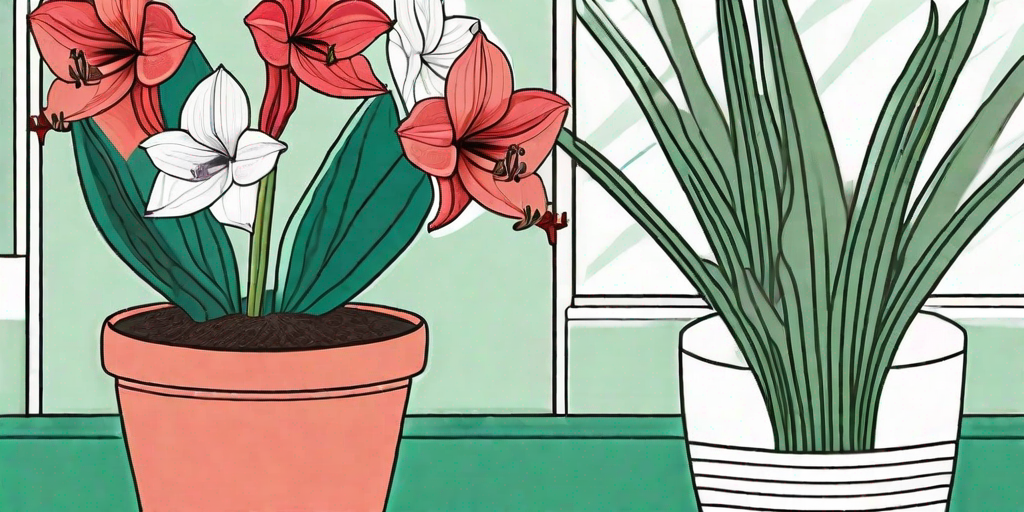
Ah, the amaryllis. A plant so beautiful, it could make a garden gnome weep. But how does one go about planting this botanical beauty in their garden? Fear not, dear reader, for this guide will take you from the cozy confines of your living room to the great outdoors, transforming you into an amaryllis aficionado in no time.
Understanding the Amaryllis
Before we dive into the nitty-gritty of planting, let's take a moment to appreciate the amaryllis in all its glory. Native to South Africa, this perennial bulbous plant is known for its large, showy flowers that can brighten up even the gloomiest of gardens.
But don't let its exotic origins fool you. The amaryllis is a hardy plant that can thrive in a variety of climates, from the balmy tropics to the chilly north. All it asks for is a little love, care, and the right conditions to bloom.
The Anatomy of an Amaryllis
Understanding the anatomy of an amaryllis can help you care for it better. The plant consists of a large bulb that stores nutrients, long, strap-like leaves, and a sturdy stem that holds up the flowers. The flowers themselves come in a variety of colors, including red, pink, orange, and white.
Fun fact: The name 'amaryllis' comes from the Greek word 'amarysso', which means 'to sparkle'. And sparkle it does, with its vibrant flowers and lush foliage.
Planting Your Amaryllis
Now that we've gotten to know the amaryllis a little better, it's time to roll up our sleeves and get planting. But before we do, let's gather our tools and materials.
What You'll Need
- Amaryllis bulbs
- A pot or garden bed
- Well-draining soil
- Compost or slow-release fertilizer
- A trowel
- Watering can
Got everything? Great! Let's move on to the planting process.
Step-by-Step Planting Guide
- First, prepare your pot or garden bed by filling it with well-draining soil. The amaryllis doesn't like wet feet, so make sure the soil drains well.
- Next, dig a hole that's about twice the size of the bulb. Place the bulb in the hole, with the pointy end facing up.
- Fill the hole with soil, leaving the top third of the bulb exposed. This helps the bulb get enough light and air.
- Water the bulb thoroughly, then wait for the magic to happen. In about 6-8 weeks, you should see a stem emerging from the bulb, followed by leaves and flowers.
And voila! You've successfully planted an amaryllis in your garden. Give yourself a pat on the back, or better yet, a slice of cake. You've earned it.
Caring for Your Amaryllis
Planting the amaryllis is just the beginning. To keep your plant happy and healthy, you'll need to provide it with the right care.
Watering and Feeding
Water your amaryllis sparingly until the stem starts to grow, then increase watering. Remember, the amaryllis prefers to be on the dry side, so don't overdo it. As for feeding, a slow-release fertilizer or compost can provide the nutrients your plant needs to thrive.
Light and Temperature
The amaryllis loves the sun, so place it in a spot where it can bask in at least six hours of sunlight a day. As for temperature, the amaryllis can tolerate a wide range, but prefers temperatures between 60-75°F (15-24°C).
FAQs
When is the best time to plant amaryllis?
The best time to plant amaryllis is in the fall, about 6-8 weeks before you want them to bloom. This gives the bulbs enough time to establish themselves before the cold winter months.
Can I grow amaryllis from seed?
Yes, you can grow amaryllis from seed, but it's a long and tedious process. It can take up to 4-5 years for a seed-grown amaryllis to bloom, compared to 6-8 weeks for a bulb-grown plant.
Why isn't my amaryllis blooming?
There could be several reasons why your amaryllis isn't blooming. It could be due to insufficient light, overwatering, or lack of nutrients. Try moving your plant to a sunnier spot, reducing watering, or feeding it with a high-potassium fertilizer.
Conclusion
And there you have it, folks. A comprehensive guide to planting and caring for amaryllis in your garden. With a little patience and care, you too can enjoy the beauty of this stunning plant. So what are you waiting for? Grab those gardening gloves and get planting!















